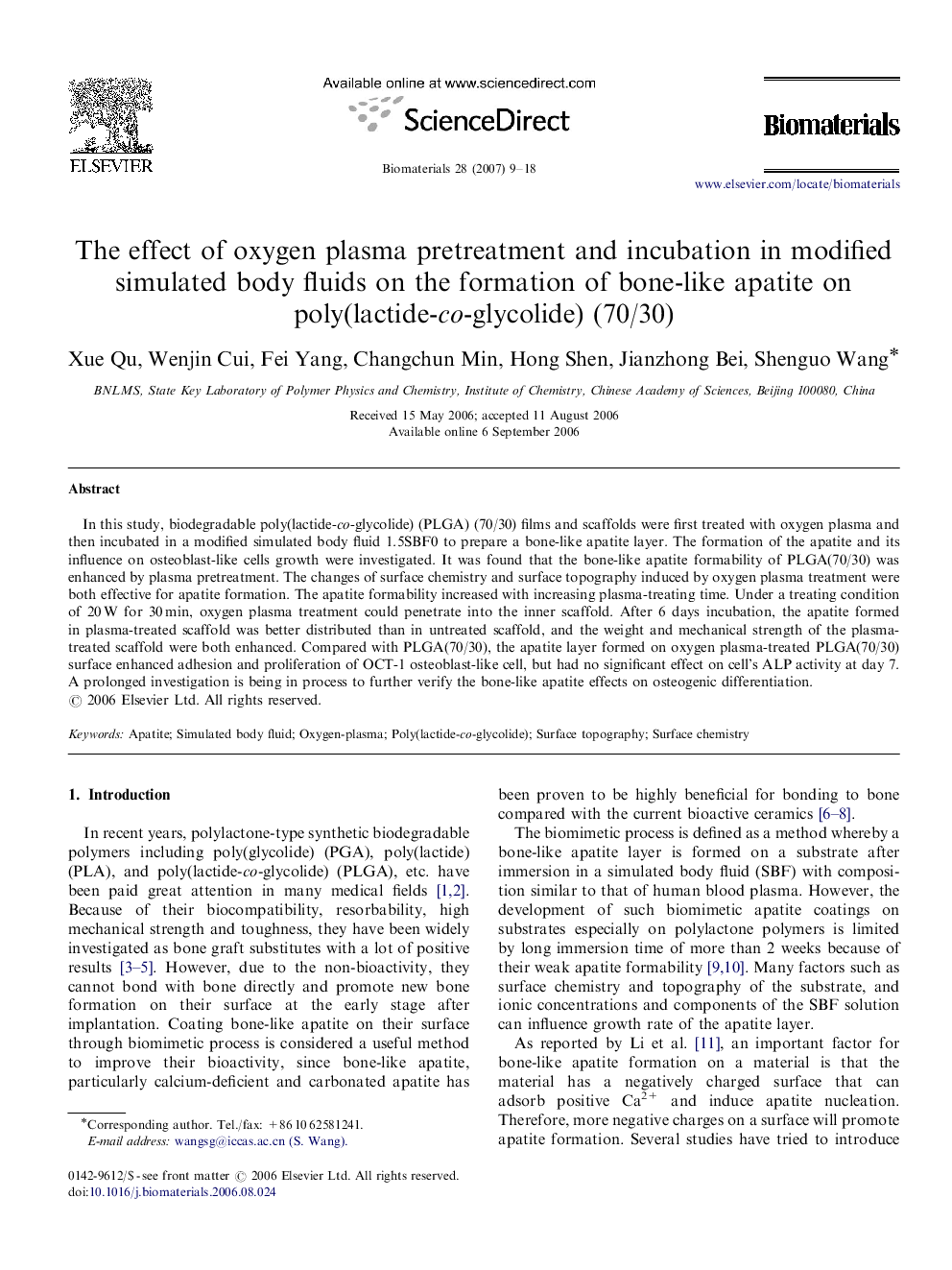| Article ID | Journal | Published Year | Pages | File Type |
|---|---|---|---|---|
| 11125 | Biomaterials | 2007 | 10 Pages |
In this study, biodegradable poly(lactide-co-glycolide) (PLGA) (70/30) films and scaffolds were first treated with oxygen plasma and then incubated in a modified simulated body fluid 1.5SBF0 to prepare a bone-like apatite layer. The formation of the apatite and its influence on osteoblast-like cells growth were investigated. It was found that the bone-like apatite formability of PLGA(70/30) was enhanced by plasma pretreatment. The changes of surface chemistry and surface topography induced by oxygen plasma treatment were both effective for apatite formation. The apatite formability increased with increasing plasma-treating time. Under a treating condition of 20 W for 30 min, oxygen plasma treatment could penetrate into the inner scaffold. After 6 days incubation, the apatite formed in plasma-treated scaffold was better distributed than in untreated scaffold, and the weight and mechanical strength of the plasma-treated scaffold were both enhanced. Compared with PLGA(70/30), the apatite layer formed on oxygen plasma-treated PLGA(70/30) surface enhanced adhesion and proliferation of OCT-1 osteoblast-like cell, but had no significant effect on cell's ALP activity at day 7. A prolonged investigation is being in process to further verify the bone-like apatite effects on osteogenic differentiation.
